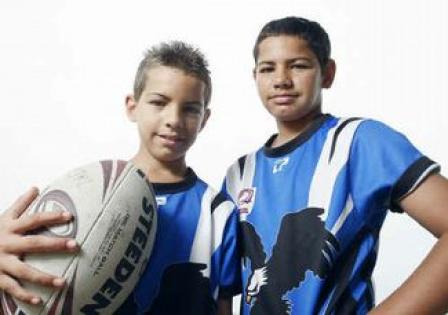There is no doubt about it - the risk of injury is a part of any sport. In a National Health Survey by the Australian Bureau of Statistics it was estimated that 367,200 Australians reported receiving a recent injury from participating in organised sports, with two-thirds of those being male. It also reported that 545,000 people reported a long-term condition resulting from sporting injuries.
Back pain is the most prevalent condition reporting at around 35%, then joint injury 14% and long-term injuries relating to the knee at 10%. In total, chronic injuries relating from sport account for one-quarter of all injury related long term conditions.
What can we do to lower these figures?
It comes down to two key concepts: injury prevention and injury recovery.
- How do we treat injuries once sustained and how do we prevent or reduce the likelihood of injuries occurring in the first place?
- What can parents do to ensure that their child is as injury-free as possible?
Here are some general and specific suggestions to look out for as you watch your child play or train this season.
Basics
An adequate pre-season fitness regime incorporating strength and conditioning as well as cardiovascular fitness is also recommended as injury rates are higher in those who aren’t adequately prepared for the season.
It is also important for a young player in any code to know the difference between being competitive and ‘winning at all costs’ versus safety. Parents and coaches have an important role in this.
Football (soccer)
Looking closely at the sport played by more children aged 5-14 years than any other, it is recognised as being one of the safer sports because there is little head-to-head contact.
Most injuries (up to 80%) affect the lower body, and about 3% result in concussion. The most common head injuries are caused by collisions with either another player, goalposts, the pitch or the ball.
Coaches can help minimise the risk of injury by:
- teaching correct heading technique
- enforcing strict adherence to the laws of the game
- using smaller balls for younger players
- padding of goal posts
- encouraging the use of mouth guards
- using synthetic balls (leather can become water logged and heavier)
Players should also ensure they are using well-fitted cleats and shin guards and be aware of environmental and field conditions.
Rugby league, Rugby or Australian Rules
About half of theinjuries in the other football codes occur during tackling
It seems unavoidable but there is plenty that can be done in terms of training, strength and conditioning to minimise risk.
Coaches can minimise the risk of injury by:
- teaching the best way to tackle and to fall
- teaching the basics of how to clean and defend in a ruck or maul and how to engage a scrum
- enforcing strict adherence to the laws of the game
- using smaller balls for younger players
- padding of goal posts
- encouraging the use of mouth guards
- using synthetic balls (leather can become water logged and heavier)
- knowing how to avoid dangerous situations in training and on the field.
Prevention
Prevention is a fundamental part of what I do as a chiropractor. Not only is chiropractic excellent in preventing the likelihood of injury but it can also be a secret weapon in enhancing performance (we are not talking the Stephen Dank style!).
The central nervous system (CNS) consists of the brain and spinal cord which is protected by the spinal vertebrae. It is responsible for integrating sensory information and enabling the body to respond accordingly.You could think of the spinal cord as a conduit relaying signals between the brain and your muscles, tissues and vital organs. Physiological functions like balance, proprioception and spatial awareness, hand to eye co-ordination, strength, cardiovascular output and recovery, metabolic rate, visual referencing, reaction time, muscle performance and response are all governed by these messages.
A diminished nervous system is a diminished athlete. The ability to avoid an injury can quite often come down to how well an athlete is able to adapt to situations that arise. Any interruption or ‘sluggishness’ of these messages up and down the spine can result in a slow response potential injury such as collision with another player.
Appropriate treatment and regular checkups with a health professional can also decrease the risk of musculoskeletal injury.By ensuring vital resources are not misallocated to inefficiencies in the body, fatigue is reduced and strength, fitness and overall performance is improved.
In the unfortunate occurrence of injury, a quick recovery is a good recovery.
Statistics show a large proportion of injuries develop into long term conditions with 35% being back pain. What might seem like a minor or insignificant injury may develop in to a chronic and much more difficult condition to resolve.
Whatever sport your child plays, it’s important to remember that staying safe on the field or court is a team effort.
Make sure your child’s coach is doing their best to keep injury in mind when training and that your child is wearing appropriate gear and that. Prevention is definitely better than cure so play safe so your child can continue to enjoy the many benefits of playing sport throughout the season.



















__small.png)










